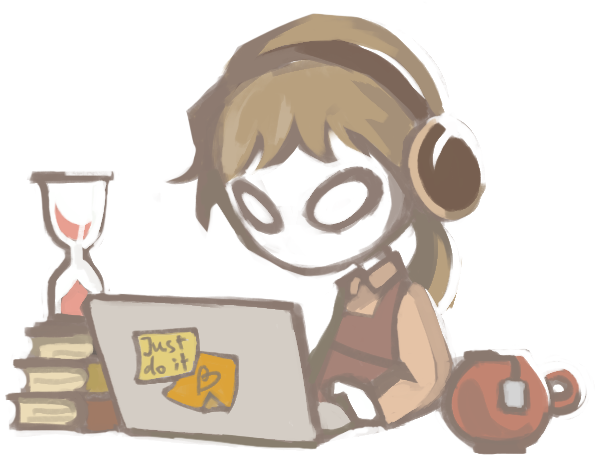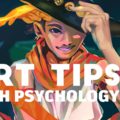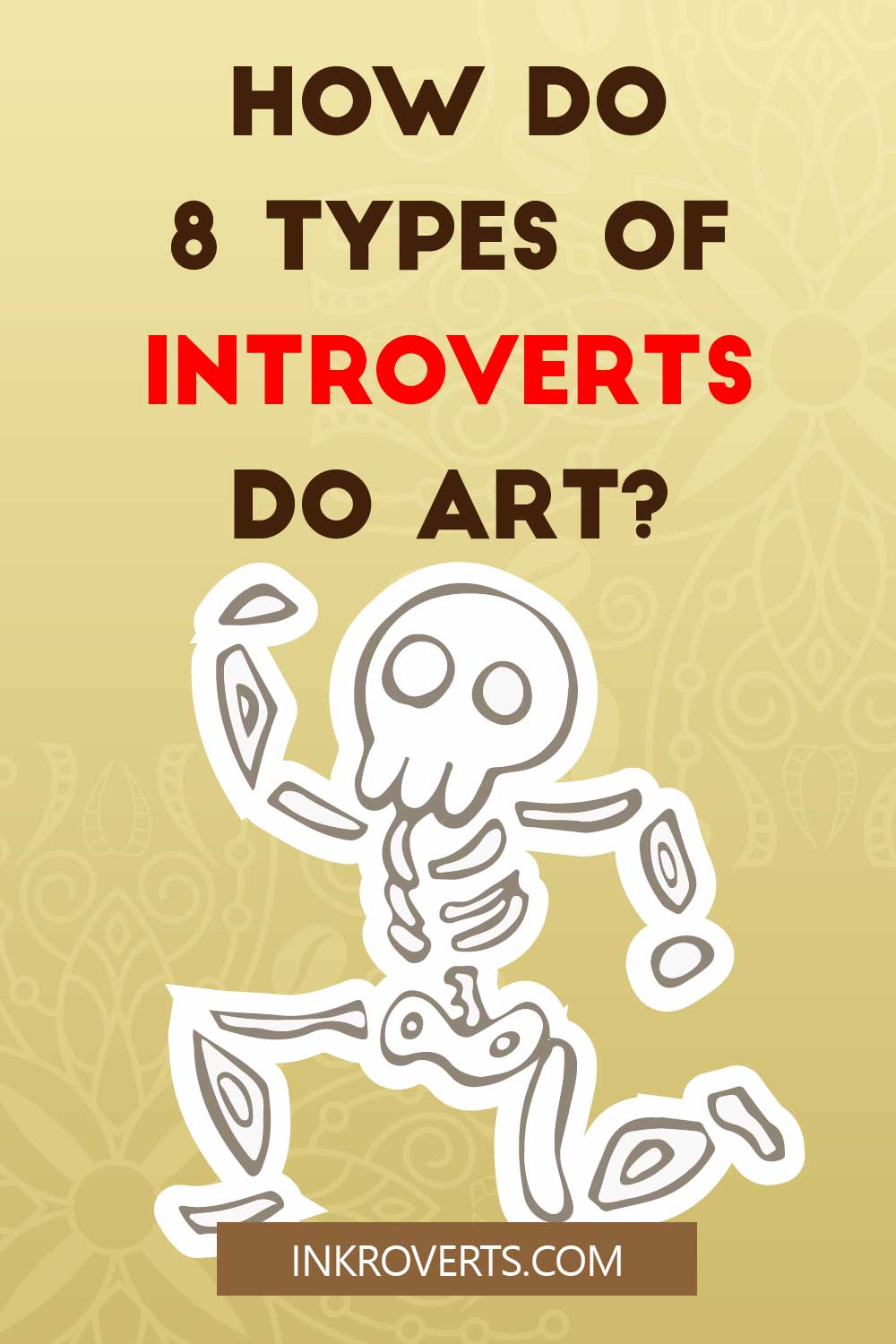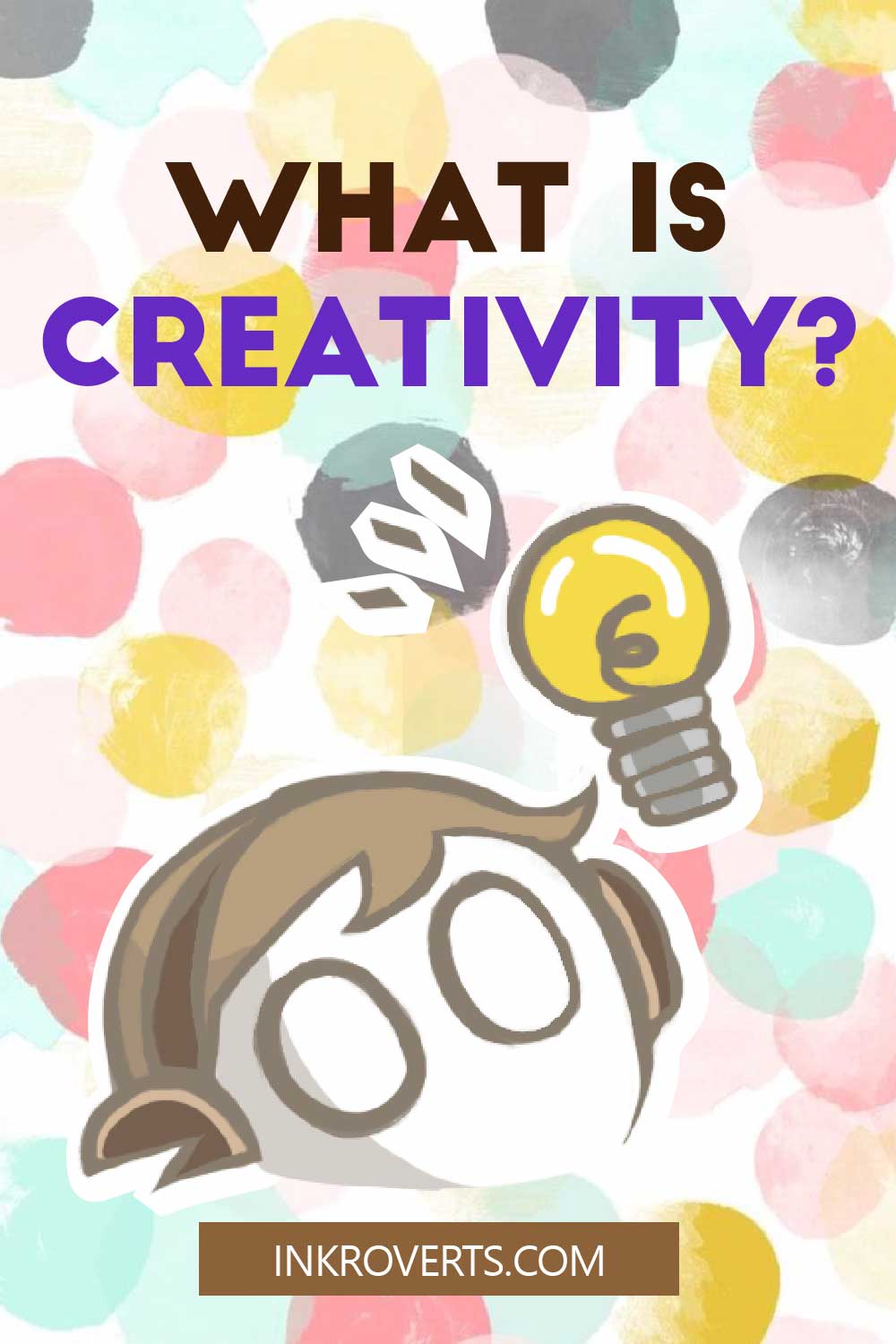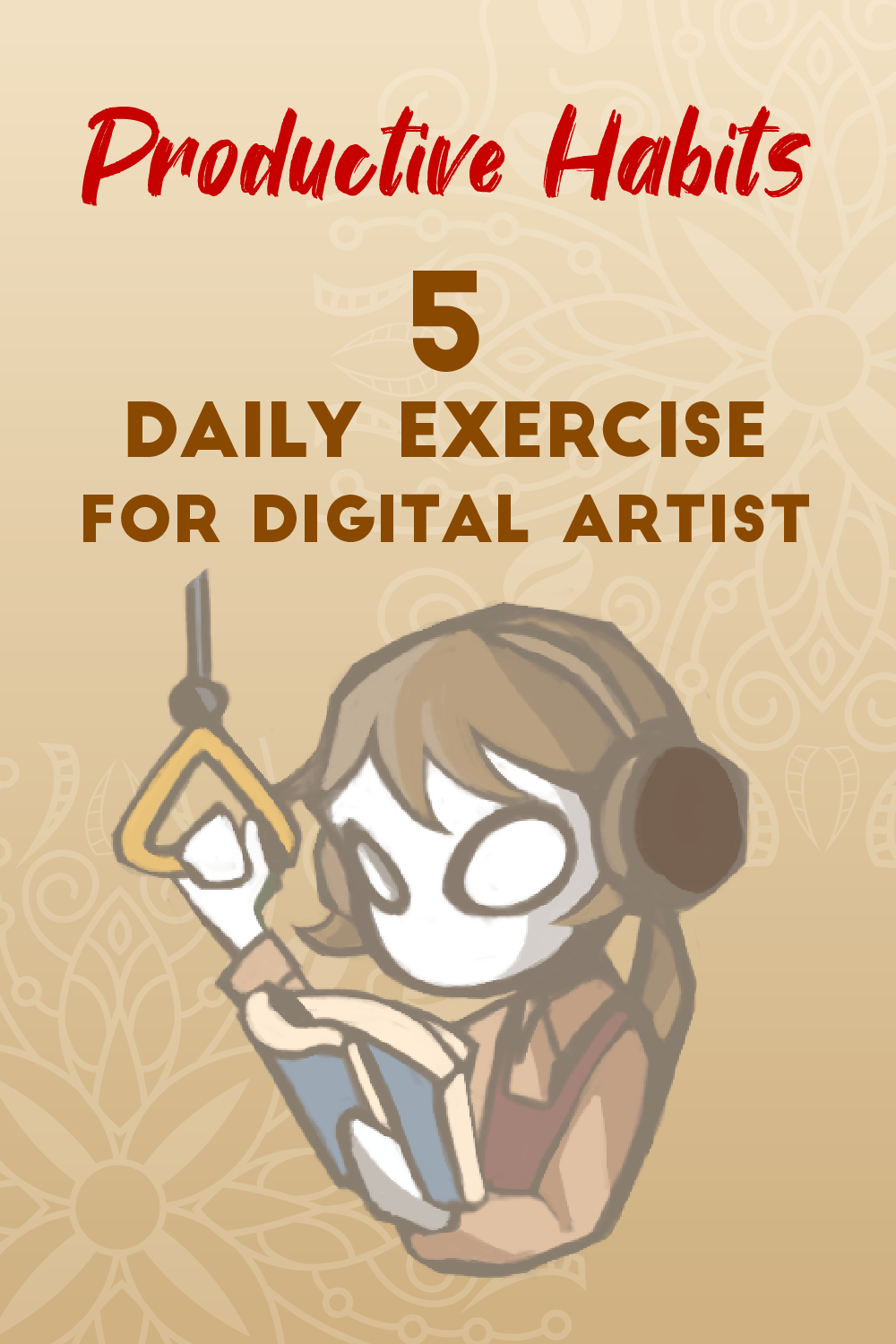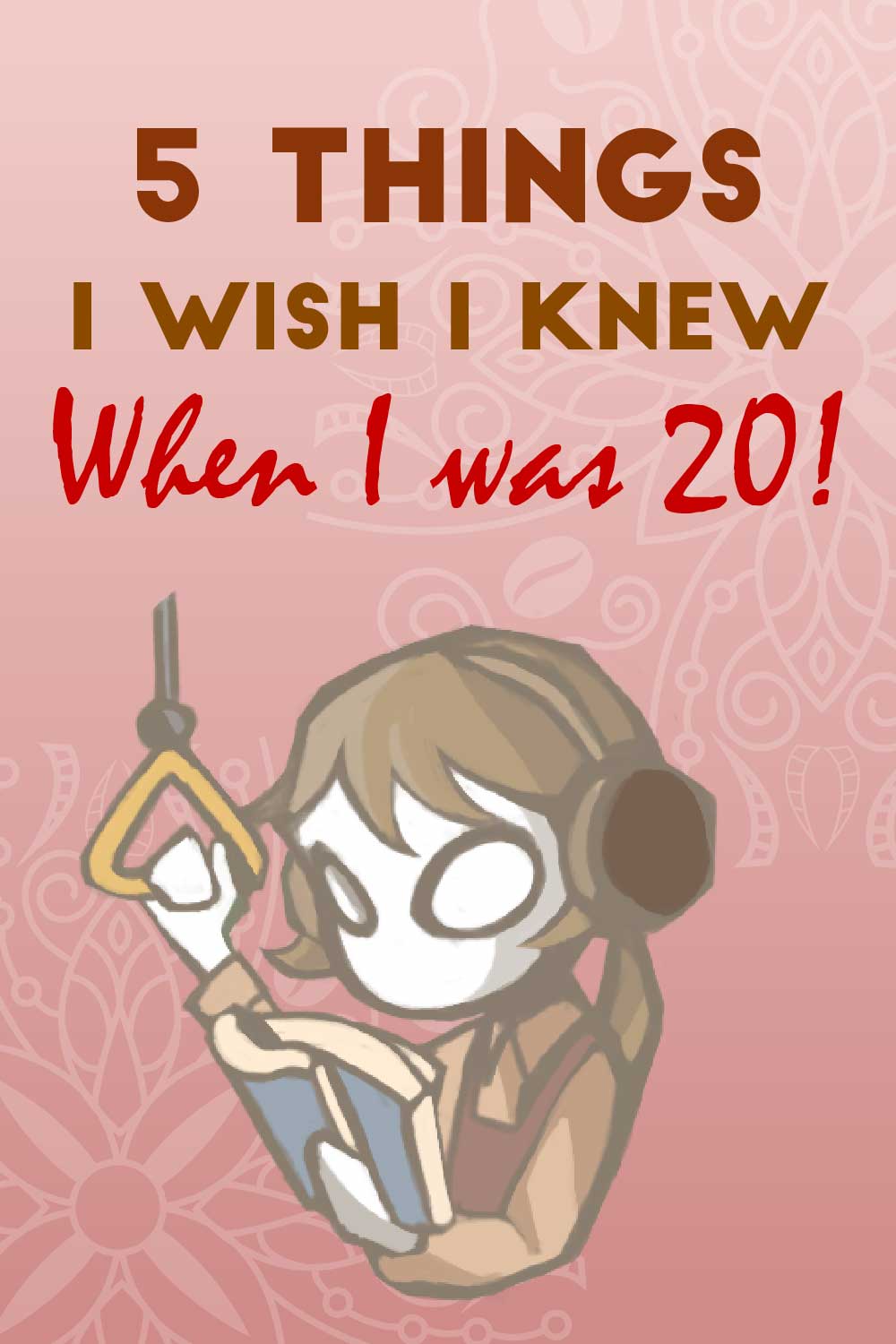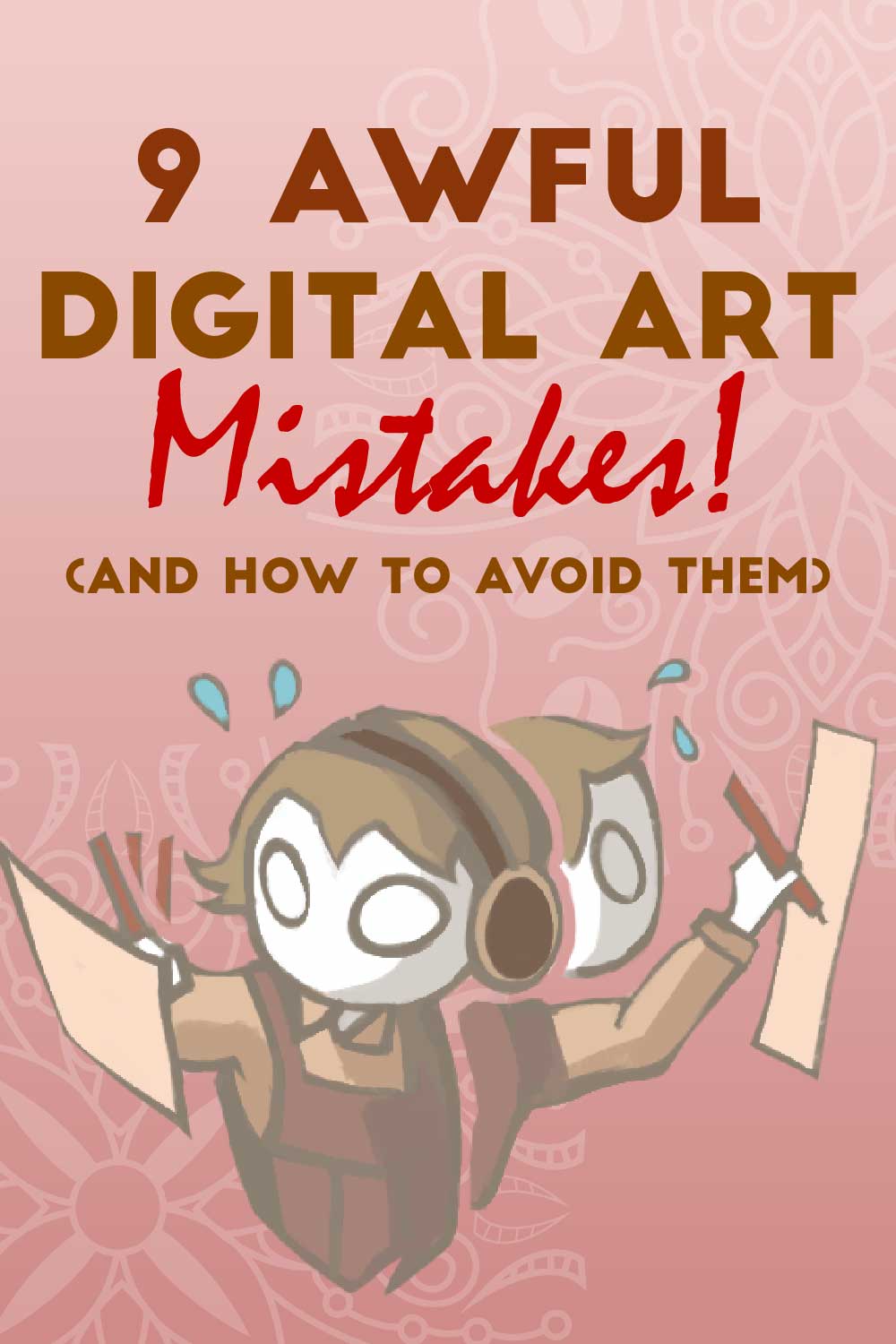
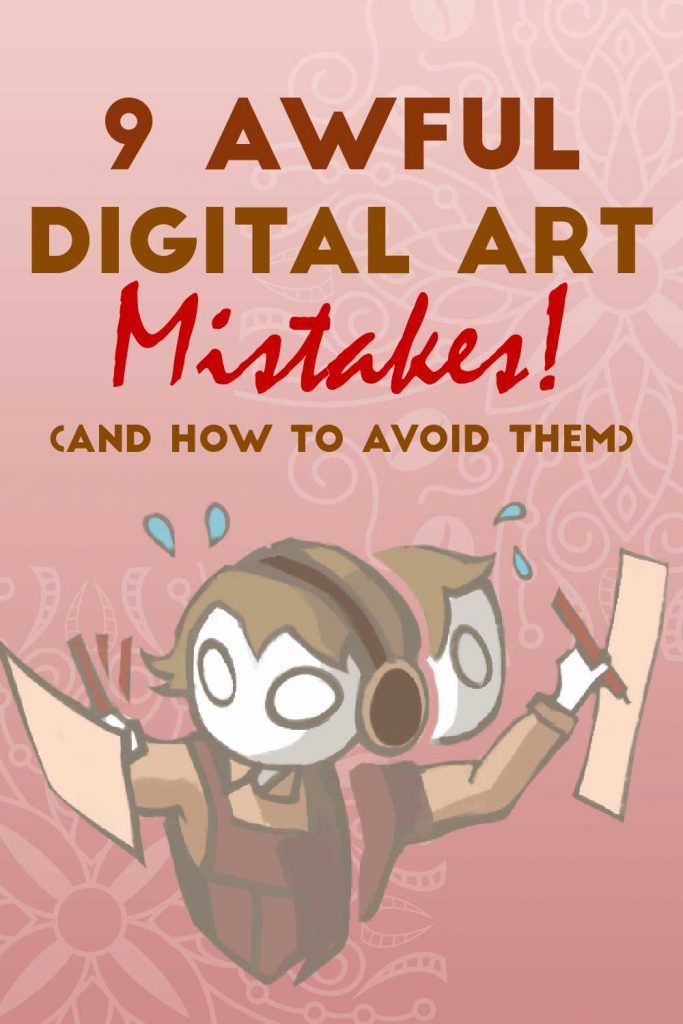
I have to confess here.
I also made many of these mistakes. And still making some of them.
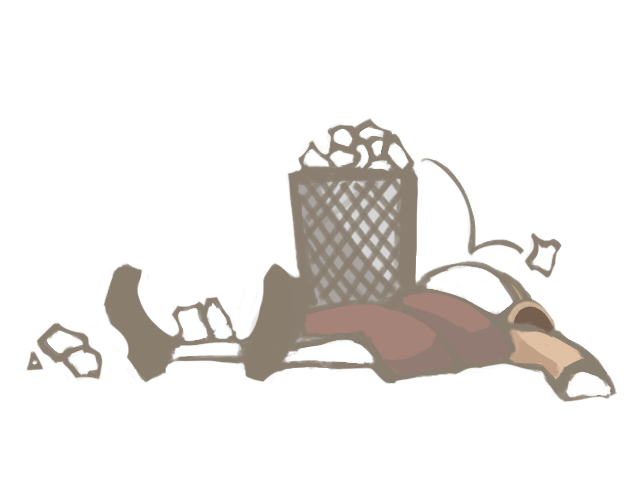
The bad thing is that I only recognize my mistakes afterward. It was too late.
That’s why I write down the list of mistakes digital artists make.
You need to first know what you do wrong, before you can improve.
The mistakes below are about both mindset and practice.
Because even when you are great at your techniques, having a good mindset can double your results.
For example, since you’re sharing your art while trying to fit in the art community, you need to know some artist’s etiquettes.
More often than not, you may not notice that you have some bad habits here and there!
Even though you may think some of them are just trivial- if you leave them alone for long, a small problem may very well grow into a big one.
Just like little seeds slowly growing to be large trees.
But don’t worry!
The key is to have the heart to better yourself.
Here is the list of the top 9 mistakes digital artists may have, as well as the special tips to counter them.
Table of Contents
1. Being Over-cautious
“Art Thief! You Stole My Pose!”
Oh, no! Someone is trying to take advantage of you!
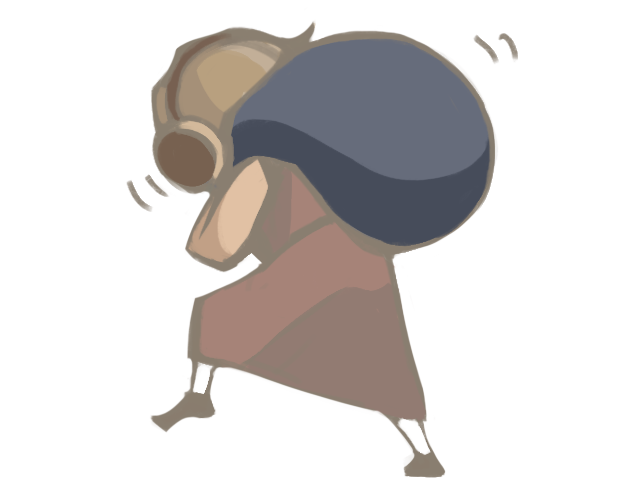
Beginner artists are especially vulnerable because they believe they have no audience who will recognize their art styles.
With no one who recognizes them, it’s easy for ill-intentioned people to claim their artworks.
But have they considered this?
Poses, facial expressions, and backgrounds are easy to overlap in different artworks. Especially for pin-ups and portraits.
How many T-poses have you seen in full-body portraits? Are they really copying each other?
Artists- who panicked- often decide to take overly-drastic measures.
First, they report the “art thief”. Second, they write a long post as a cry-for-help.
For prevention, they plaster a big watermark on their future artworks. So there will be absolutely no one who can steal their artworks.
In worse scenarios, angry artists seek revenge to the extreme.
They disclose their story and message records online. Crush those who dare take advantage of them to a pile of dust.
Result? Why, it’s endless drama.
Happy Thoughts: “It’s Not the End of the World”
Sometimes artists don’t mean to steal.
Some just happen to draw similar poses or compositions.
Some just like to share others’ artwork on their social media, and don’t have the habit of giving credits.
To avoid stressing yourself, think about this:
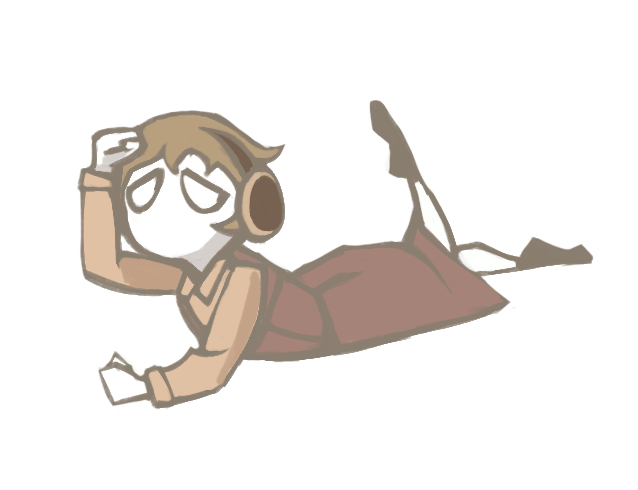
Is the “thief” claiming your art as theirs? Or do they have a habit of reposting different artists’ work?
If they repost stuff here and there, usually their audience already know that the artworks are not made by them.
Another question is-
Are the consequences so bad that I have to react like_________?
Personally, I’d say putting a big watermark is a terrible idea. A small signature in the corner is better.
(But you know: if someone just like to repost art, it doesn’t change their mind even when there are watermarks or signatures.)
Of course, there are art thefts. But it’s still not the end of the world.
At most, you can report them to the site moderators.
Remember, your creative work has copyright without any need for registration. So the law is on your side.
The important thing is:
Don’t let the incidents discourage you from sharing your art/ your full artwork, or make you distrusting as a person.
2. Laziness
“I’m Too Lazy To Complete This.”
Woah there!
I suppose I don’t need to say before you know something’s wrong, right?
This is an awfully common thing I found. Usually in the art descriptions on social media.
“Sorry, I’m a lazy artist.”
Come on! Art is like sports and playing musical instruments. Constant practice is the way!

It’s good that you recognize that you’re not hard-working enough.
But it’s a different story when you decide to do nothing about it.
Also, what do you think your audience will feel when they read your “lazy” self-proclamation?
Will they really accept it as a reason why “this upload is not as good as the rest”?
Sure, social media emphasizes heavily on consistency. And sometimes you just have to upload when you don’t have anything better.
But laziness is another story.
It means you decide not to draw even when you have time and energy.
Laziness drags you down, making you slow in improvement. And even downgrades your skills!
Happy Thoughts: “I Need A Break”
It’s totally normal to feel under the weather.
That means it’s time to take some rest!
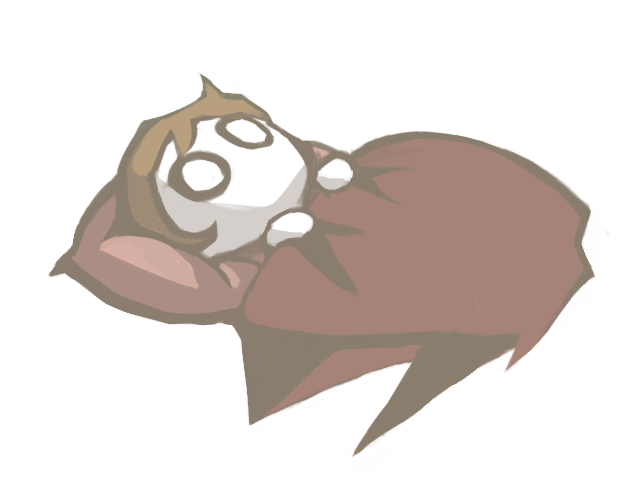
You might prefer to set an extremely tight schedule for themselves, especially in the beginning, when you’re hot-blooded and motivated.
But in actuality, your energy levels are not as high as you believe.
The first few weeks may be fun.
Then it becomes tolerable.
Then you find out life has other things that need you attention.
Consistency is the key, not speed. So don’t be afraid to set a slower schedule.
After all, what’s the point of setting a schedule if you suffer from following it?
The most underrated but extremely important thing is: make time for your mind and body to rest!
3. Flexing the Wrong Things
“Look At Me! I’m Only 10 Years Old!”
Yes, we all know what they’re trying to imply.
Another drawing-Mozart is born into this world. Let’s all rejoice! We’re so happy for them.
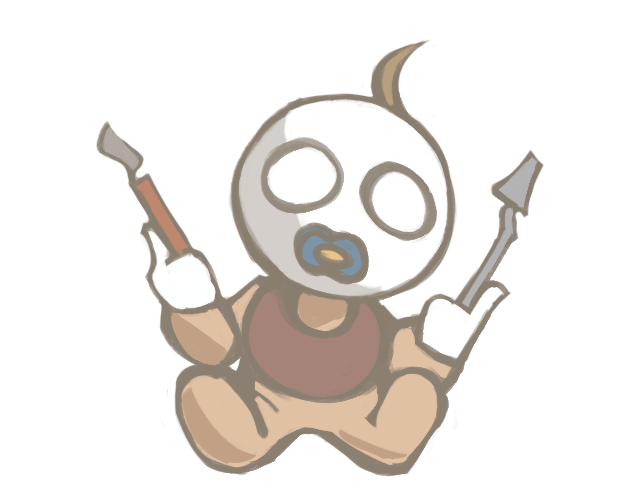
So.
Happy.
Especially when they’re self-proclaimed.
One of the biggest reasons young artists are proud of their age- is the implied meaning that they will reach their success earlier than most people.
But does it really work like that?
According to research, artists usually hit their prime in their 30s and 40s. Musicians at 20s to 30s. Athletes at 20s. And Writers at 40s to 50s.
Does that mean musicians start their musical educations later than athletes do their sports?
Does that mean writers write at a later age than artists draw?
Of course not!
Your skills improve according to how much effort you put into drawing, not how long ago you started.
So don’t let yourself be discouraged!
A warning to artists who want to be famous for their young age:
Age doesn’t last. It’ll take only a short time- maybe 2 years- for another younger, newer artist to emerge.
After that, your most prideful thing is surpassed. That can only lead to a sense of defeat.
Better be known as skillful, than be known as a kid who’ll grow up soon like everybody else.
Happy Thoughts: “I Flex My Skills, Not Age”
Unlike age, skills improve through time.
When you’re good at what you do, you have all the right to show off to the internet.
In fact, you don’t even need to do that intentionally!
Look at professional artists’ blog, hundreds of comments were complimenting their work.
Don’t worry if you find artists who start younger than you. Just work on your own pace.
Try not to see art as a race. Having so many imaginary enemies in your field will only tire you out.
Instead, try to look at others’ art closely.
Implement what they do well, and avoid what they do badly.
Or better yet, reach out to them! Say hi, and ask how they get to the point they are in!
Then you can get yourself a new learning opportunity!
4. Getting Desperate
“Pls Like My Art!”
Imagine you have a clingy boyfriend/ girlfriend, it doesn’t take long before you feel exhausted and annoyed.
With the same idea in mind, telling people to like you doesn’t work.
In fact, it only pisses people off.
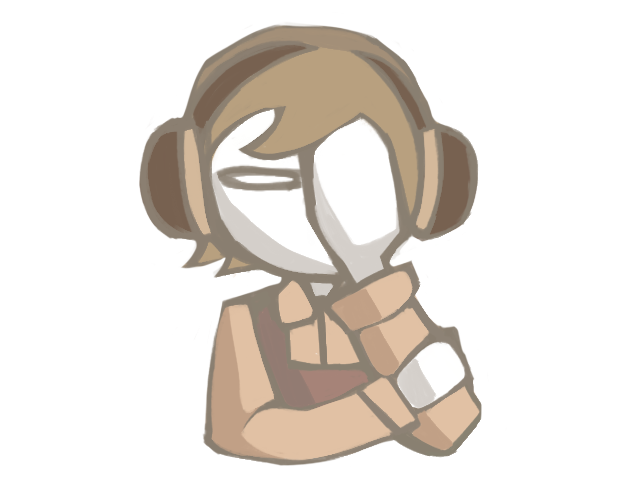
Attention is important for artists. But it shouldn’t be forced.
Some artists become impatient after a while. Then they will comment under other artists’ posts.
They say things like:
“Please come to my gallery!”
“Can you follow my account?”
“Like 4 like!”
If they’re lucky, they may get a few people to click into their profile.
Otherwise, some of the more outspoken, and even malicious commenters will call them out- sometimes even rudely…
You’d want to be a bit more down-to-earth than that.
Happy Thoughts: “I Earn Respect Through My Work, and Attention Through Engagement”
If you want more people to see your work, there are other ways.
The first thing is- of course- improve your skills.
The second thing is- to comment on people’s artwork.
Genuine engagement makes people notice you.
Instead of “Pls like my art!” and “Great art!”, try talking about what the artwork makes you feel.
Artists love getting feedback!
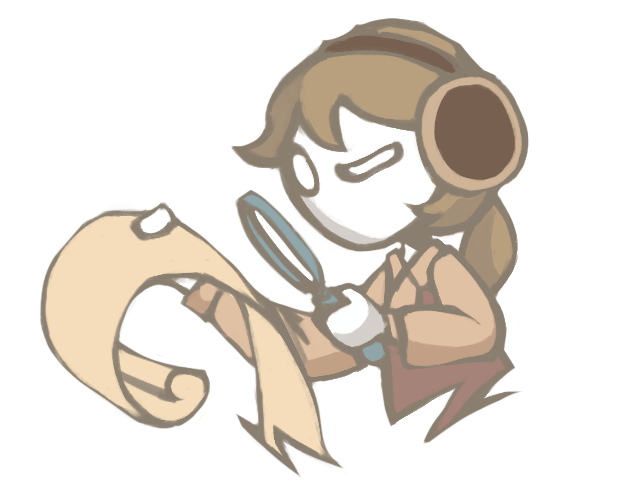
A full, informative response shows that you’re passionate about what you do!
After that, it’s your audience’s choice whether they want to browse your art or not.
Even as professional artists, there are always people who’d admire/ dislike your art style.
But at the end of the day, remember that preferences is neither your nor their fault.
5. Fishing for Sympathy
“I’m Broke. Please Buy My Art.”
I have seen this on social media many times.
Sometimes artists beg people to buy their art. Sometimes they even demand donations.
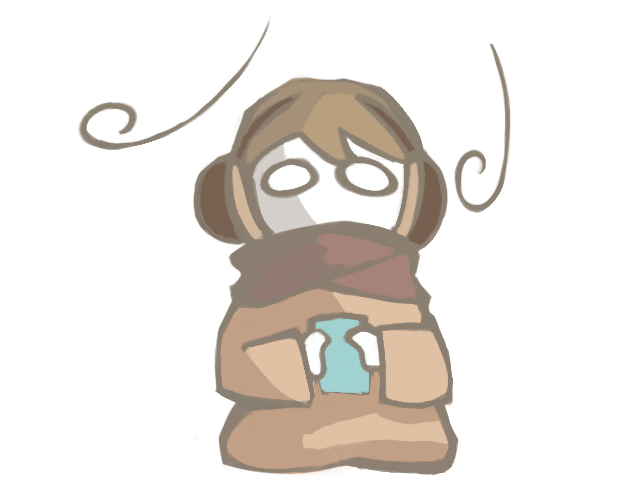
However, it doesn’t matter if they list out their bills and post their income statements for everyone to see
They’re clearly fishing for sympathy.
From the perspective of a stranger, this move can seem very suspicious. The artist may even get reported as a fraud.
All I can say is: don’t try this.
If an artist needs money, they can definitely make some with a more effective and dignified means. You can earn through commissions or prints.
I was a student who don’t even have clients.
As a way to earn money, I simply had a part-time job just like many others.
Those part-time jobs sometimes have nothing to do with art. But I can earn money while still drawing.
You probably can think of a better plan than I did.
Happy Thoughts: “I Earn With Honest Means”
It’s not shameful to ask for help now and then. But fishing for sympathy may appear disrespectful to some other artists.
“Disrespectful? But people choose to donate to me!” Some may say.
Even so, they’re still taking advantage of people’s sympathy, instead of just selling artworks.
And, think about it:
If an artist succeeds in using donations to pay all their bills, are you sure they won’t use the same tactics again in the future? Even when they are fully capable to pay through honest means?
6. “Anime Is Not Art. They Are Just Fetishes.”
Anime seems to have earned a bad name for some people.
Here’s a story:
I have seen some artists labeling “anime” as “bad art” or “bad animation”.
Funnily enough, because they think Ghibli films like Spirited Away and Howl’s Moving Castle are good, they confidently said, “Ghibli films are not anime”.
Logic, am I right?
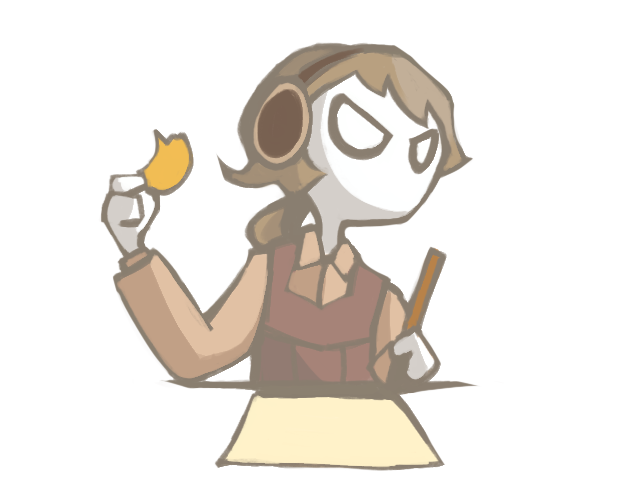
The above may be a rather extreme example, but there are artists who defame anime as an art style.
Maybe an artist despises anime.
Maybe they don’t want to have anything to do with it.
But dismissing the anime style seems like a loss in general.
Simplifying/ stylizing characters and objects has been a common technique in art and illustration.
Looking at comic style, Calarts style (Disney and Pixar), and so on, we can easily see- that anime is only one of the many variations.
So don’t be a snob of a specific style!
Happy Thoughts: “Everyone Has Different Preferences”
Anime may have some bad artworks. But there are extremely good anime artworks as well!
Take the most popular artist overall on DeviantArt, Yuumei, as an example.
Her usual theme includes environment pollution, freedom of speech, political corruption, and so on.
The art style is extremely appealing because of the creative composition, color palettes, and lighting…
And it is in anime style.
So, if you’re interested- or better yet, passionate- about developing your art style like anime, be confident!
Remember that’s just as good a choice as any other art style.
7. “Digital Art Is Cheating.”
This saying is a bit old. But it still exists.
Digital art has its own challenges, just as a traditional pencil and paper do.
The top reasons why traditional artists say digital art is cheating are:
- Ctrl+Z
- Bucket Tool
For Ctrl+Z, it’s basically an eraser, but faster.
However, speed says nothing about the quality of an artwork. You can spend 60 seconds drawing a face.
It’s indeed really fast, but does it ensure high quality?
For Bucket Tool, unless you draw with MS Paint, it’s very hard to color an area precisely.
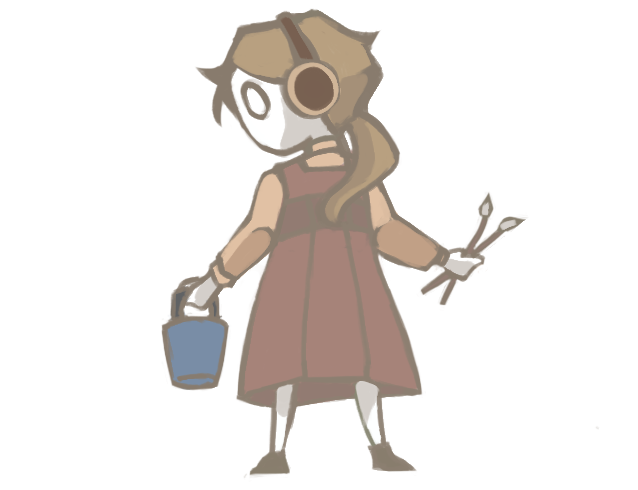
A sense of detail is also necessary to create a complete, satisfying artwork.
All in all, digital art is just another medium.
A colored-pencil artist may say a watercolor artist is cheating with the thick brush.
An acrylic painter may say an oil painter is cheating with the glossiness.
Happy Thoughts: “There’s No Shortcut in Art.”
Digital art may seem to benefit from keyboard shortcuts. But art, in general, is no “shortcut” matter.
Imagine a little kid who seldom draws. Give him an expansive Wacom tablet and a 22-inch display.
Do you expect him to create a masterpiece?
Without fundamental skills, it doesn’t matter whether someone draws with traditional or digital media.
All art forms need patience and efforts.
Luckily, digital art is on the rise now.
Many forms of media- like movies, animations, games, and even children’s book- use digital art.
So let that be a motivation!
8. “Messiness Is My Style.”
This one really depends on intention.
Do you draw messily because it’s your intention to do it, or because you can’t control your hand?

If it’s the former, then you have nothing to worry about.
You have mastered the fundamentals and decided that your artworks are better with more hatchings, and small lines.
If you’re not sure, or you know you’re the latter, try drawing a hand.
The hand is one of the most difficult body parts to draw, mostly because it can be extremely dynamic with so many joints.
After you draw a hand, look at the outlines.
If you have many lines, it can be messy. But if it’s intentional, you’ll know which particular line is the real outline.
Artists without enough fundamental skills may- in turn- rely on the viewers to decide which line is the real outline of the hand.
Worse, they may say, “it doesn’t matter. It’s my style.”
Happy Thoughts: “I Strive to Improve My Control”
Control is an extremely important part for artists, especially if you aim to be an illustrator and comic book artist.
That’s because illustrations and comics aim to tell stories, instead of letting viewers interpret the meaning by themselves.
One wrong move may leave the audience confused.
And where does control come from?
Practice!
Lots and lots of practice and fundamental skills.
For fundamentals, I highly recommend learning from Proko.
They have free tutorial videos that provide detailed descriptions of how to handle drawing human anatomy.
9. Dismissing Criticism
“Don’t Like, Don’t See.”
When facing haters, we sometimes use phrases like this to shoo them away.
But I have seen artists use this in their own artworks’ descriptions. They shun negative comments before they even come.
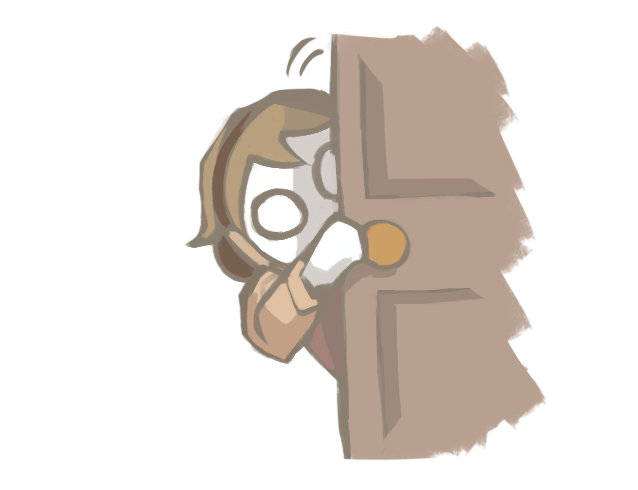
We have to first understand the intention of “negative comments”.
If it’s just your audience telling you which part they don’t like, then you’ll suffer some loss by slamming the door on their faces.
More often than not, your opinion on your own artwork is different from the opinion of your audience!
So it’s helpful to know what your audience like/ dislike.
When you see what people dislike about your art, you know which part you should improve on.
Of course, it’s you who ultimately decide if their criticisms are useful or not, but at least you gain some insight!
Happy Thoughts: “I Value Honesty”
Sometimes things you want to hear don’t equal things you like to hear.
But honesty is something hard to come by in real life. On the internet, people are prone to speaking their minds because of anonymity.
Your friends and family may spare your feelings, but as a result, you miss out on their true thoughts.
With negative comments, you can train yourself to develop a thick skin.

So that no matter online or offline, you’ll have the emotional intelligence to face criticisms.
You also gain wisdom in deciding which critiques are useful and which are useless.
A lone, random negative comment may very well be due to personal tastes, but ten similar negative comments are clear indications that the artists should reflect on themselves.
Conclusion
A lot of the bad habits of digital artists stem from insecurity and impatience.
Insecurity comes from the belief that you don’t trust yourself or your ability.
Impatience is the feeling you get every time you look up art-sharing websites. Beautiful, professional artworks are shoved in front of your eyes.
So, of course, you’re impatient to be as good as them.
The bad ending is that we start to see art as a race.
At the same time when the beautiful artworks give us awe, they also give us dread.
But they don’t have to.
To put things to the simplest:
You’re running a marathon. It’s an accomplishment in itself.
Unlike a short race, people sincerely congratulate you for your perseverance, no matter you finish first, in the middle, or last.
“Compare yourself today to who you were yesterday, not to who someone else is today.”
12 Rules of Life: An Antidote to Chaos, Jordan B. Peterson
